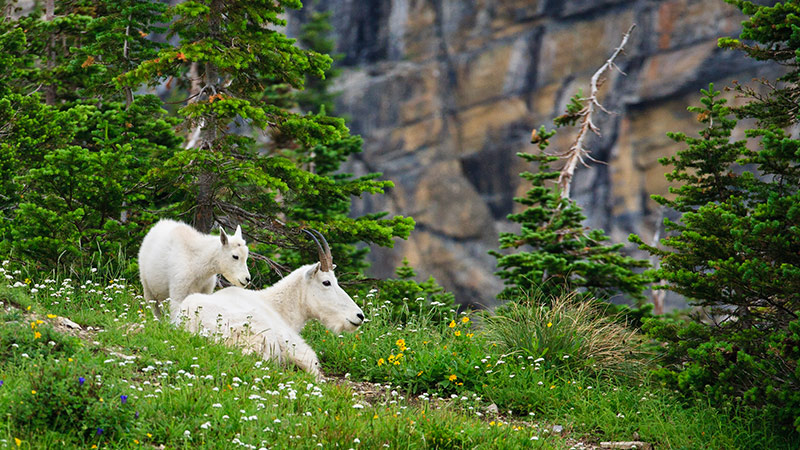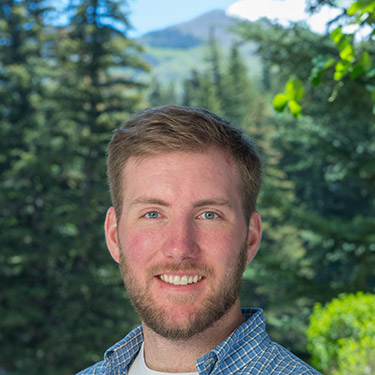October 14, 2022
Protecting a future where both people and ecosystems are more resilient against climate change means finding solutions that enable communities to thrive in balance. Across the West, one of the greatest threats facing our wildlife and wild places is human development. From 2001 to 2017, we witnessed the loss of natural areas at the astonishing rate of a football field every 30 seconds, according to a report from the Center for American Progress and Conservation Science Partners. In order to prevent continued habitat fragmentation, impacts to ecosystems, and unprecedented losses in biodiversity that are driving a modern extinction crisis, international scientists have called for the protection of 30% of land and water by 2030 (30×30).
The Biden administration has committed to this goal at the federal level, adopting 30×30 objectives as a part of the “America the Beautiful” initiative. While the effort to protect 30×30 is of national and international importance, action on the state and local level is crucial to protect our natural landscapes, prevent biodiversity loss, and achieve this critical goal.
But what can states actually do to protect landscapes and halt biodiversity loss?
The short answer is: a lot. They can create new state parks, develop land trusts, collaborate with private landowners, and include Indigenous voices. Keep reading to find out more about how we can utilize each of these policy solutions in our region.
Types of state lands to be protected
Western states protect and manage natural landscapes and wildlife habitat through a variety of strategies. Each has varying benefits and challenges for contributing to national 30×30 efforts. From designations that provide durable protections for high-quality habitat and picturesque landscapes, to upgrading protections for state lands that currently provide loose safeguards that still expose them to the threat of human development, to incentives for private land owners to ensure their land is managed to protect vulnerable ecosystems in perpetuity, Western states have multiple tools at their disposal to reach 30×30.
WRA supports state land conservation efforts through strategies like creating state parks, acquiring new lands for conservation, upgrading conservation protections for existing state-owned lands exposed to the threat of development, and bolstering incentives for private landowners to permanently manage their lands for conservation. Each of these strategies can help states get closer to achieving their piece of the national puzzle to protect 30×30.
State parks
State Park designations are one of the strongest tools that states across the region can use to protect natural landscapes from development and habitat fragmentation. Similar to the national parks you might be more familiar with, state parks are set aside and protected for people to experience and enjoy. While often managed for recreation, state parks help ensure that wildlife and sensitive ecosystems are closely monitored and managed by conservation agencies and that unique ecosystems are preserved.
Some states, like Colorado, have called for an expansion of their state parks systems, and have even asked the public to nominate places to be protected as new state parks. Adding new state parks was a key strategy identified by WRA and our partners at Conservation Colorado in our report on Colorado’s Pathways to 30×30.
Unfortunately, while state parks provide a powerful tool to protect 30×30, adding new state parks and managing them to protect wildlife and healthy ecosystems takes money. Many Western states, like New Mexico, lack dedicated sources of conservation funding to help add to their state park systems. While federal assistance is available through the Land and Water Conservation Fund (LWCF), states are required to meet the federal funding halfway by providing a 50-50 match. LWCF has historically funded not just state parks, but also local open space, trails, and recreation infrastructure. WRA is currently pursuing a number of policy options — including the provision of matching funds and technical assistance — to elevate the role of both states and local communities in reaching 30×30.
By engaging with legislative and budget processes in states across our region, we are working with legislators and decision makers to ensure that states have adequate and permanent sources of conservation funding to support the protection of vital habitat and unique Western ecosystems and to ensure that future generations have access to them.
State trust lands
While state parks provide a more familiar example of state lands that can help contribute to efforts to protect 30×30, other state-owned lands can help make a meaningful difference — with a few modifications to how they are managed.
State trust lands are a prime example of how innovative management policies could effectively contribute to efforts to protect and connect 30% of lands and waters by 2030. State trust lands are publicly owned lands that are typically used to generate revenue to fund schools and other public services. That revenue has traditionally been generated through the sale or development of these lands, or by leasing them for oil and gas development. These uses contribute to the habitat fragmentation and biodiversity loss. However, many state trust land parcels have significant conservation value and could be beneficially managed for recreational opportunity as state parks or wildlife areas to benefit both Western communities and ecosystems.
For example, Colorado owns 2.7 million acres of land controlled by the State Land Board, which must be managed to provide for longer term stewardship and revenue for state education. WRA is pursuing policy changes that would help increase the protective management of state trust lands. This includes pioneering the use of conservation leases, tapping into ecosystem service markets and wetland mitigation banks, and consolidating management of trust lands in a manner that ensures high-priority habitat parcels are safeguarded, rather than just sold off to the highest bidder. Achieving these policy changes would shift the conservation paradigm for state trust lands and turn them into a powerful tool to achieve 30×30.
Private land conservation
States don’t have to do it all on their own. Private land owners can – and must – be an integral part of the solution if we are going to reach these critical conservation goals by 2030. By creating state programs to help incentivize the permanent protection of important habitats and ecosystems found on private lands, states can work with landowners to create a win-win solution for rural communities and our environment.
WRA is improving program incentives for private land conservation and expand opportunities for private land owners to safeguard land through conservation easements and other permanent mechanisms in order to protect working lands from development pressures in perpetuity.
This collaboration is essential as private land makes up a major portion of the land-ownership mosaic across the West. Nearly 60% of lands in Colorado, for example, are private, making it the most prevalent form of land ownership and management in the state. Collaboration with private land owners on conservation efforts will be essential for Western states to protect 30×30.
Collaboration with Indigenous communities
The West is the historical, ancestral, and current homeland for many Indigenous peoples, including the Navajo, Utes, Shoshone, Cheyenne, Pueblo, Arapaho, Apache, and other Tribal communities.
WRA recognizes that any discussion of public land conservation must be in partnership with Tribes and respect Tribal sovereignty. Early, consistent, and authentic outreach and engagement with Tribes is essential and should be a cornerstone of Western states’ commitments to protect 30×30. WRA is engaging with Pueblos and Tribes in New Mexico to learn more about barriers to conservation funding on Tribal lands and ways to make state-side conservation funding more accessible to tribal communities.
Getting to 30×30
While Western states are well positioned to lead the nation in reaching 30×30, there is still a long way to go. Levels of land and water protection in Western states range from as much as 15% in Nevada to as low as 6% in New Mexico.
Achieving the goal of protecting 30×30 across the West and nationwide is ambitious but achievable. In order to reach the levels of protection we need on this timeline, we need to organize communities, motivate decision makers, and align policies and management directives throughout the region with this crucial goal. The work will require expertise and ingenuity, as well as collaboration with land managers, lawmakers, tribes, private landowners, and public stakeholders.
WRA is working to ensure states stay on track to protect 30×30. In Nevada, WRA drafted and helped pass Assembly Joint Resolution 3, which calls on the state to protect 30% of its land and water by 2030. And in New Mexico, WRA worked with partners, local communities, and Governor Michelle Lujan Grisham to support an executive order that directs the state to protect 30% of land and water by 2030, in line with larger national efforts.
More work is needed to make sure we protect 30×30 across our region. Colorado can and should follow this path, and WRA has been working to call on Colorado lawmakers and Gov. Jared Polis’s administration to establish strong, official 30×30 goals. Additionally, New Mexico officials are working right now to determine their strategies to fulfill the governor’s executive order. As their plans develop, we must ensure that these efforts work to create durable, permanent protections for vital wildlife habitat and our irreplaceable Western landscapes.
Take action to protect 30×30 in your state
WRA is hard at work on 30×30 in Colorado, New Mexico, Nevada, and across the West. However, we can’t do it alone. We need passionate, involved community members and advocates like you to support this work. Your voice and your donation can ensure the beautiful natural landscapes and flowing waters of this incredible region are protected so that our communities can thrive in balance with our environment for generations to come.
Let your state decision makers know you support strong efforts to permanently protect 30% and lands and waters across the West! Take action to protect 30×30 in your state today.
Make a donation to WRA today to join these crucial efforts to protect biodiversity in the West.



